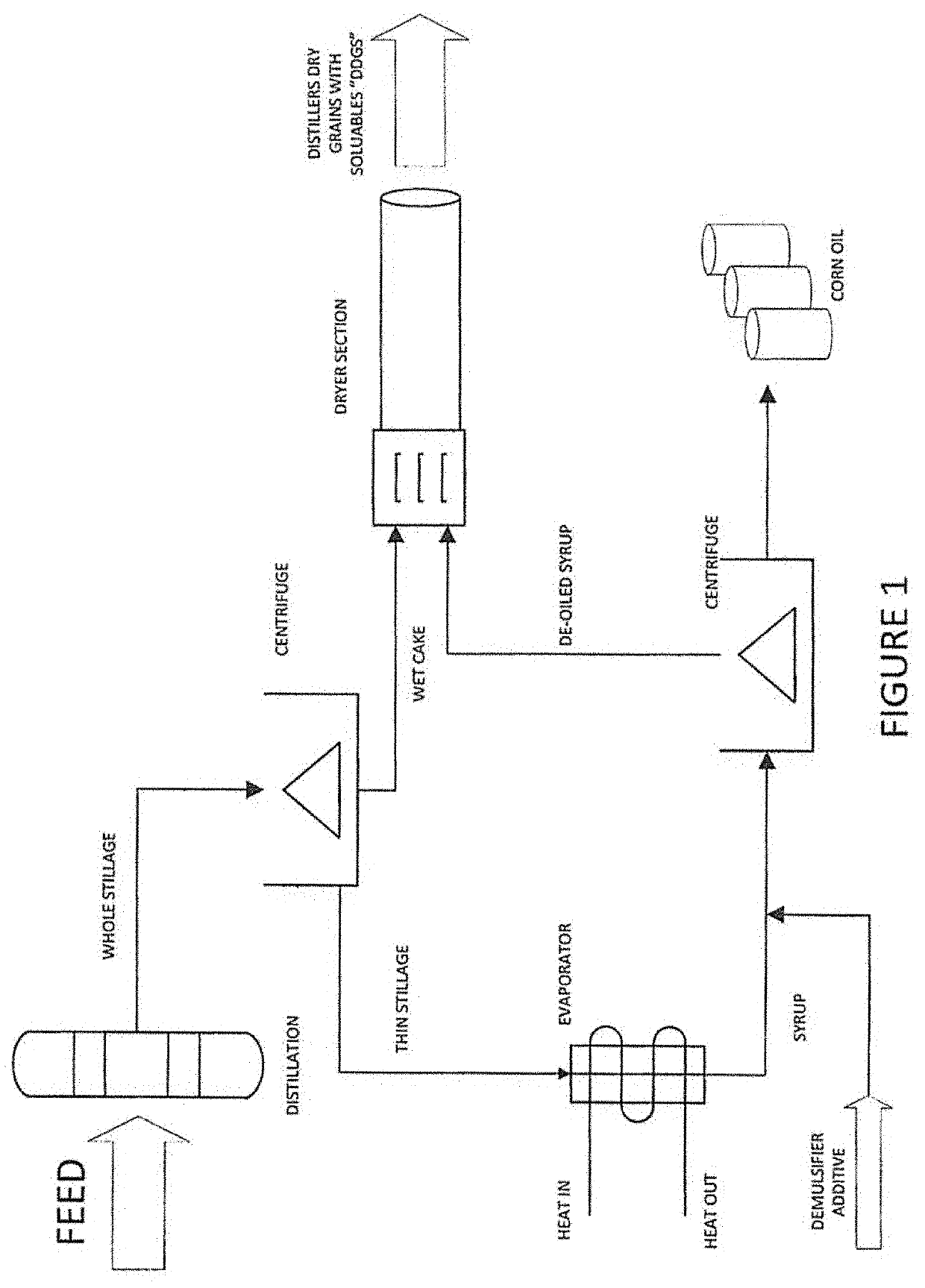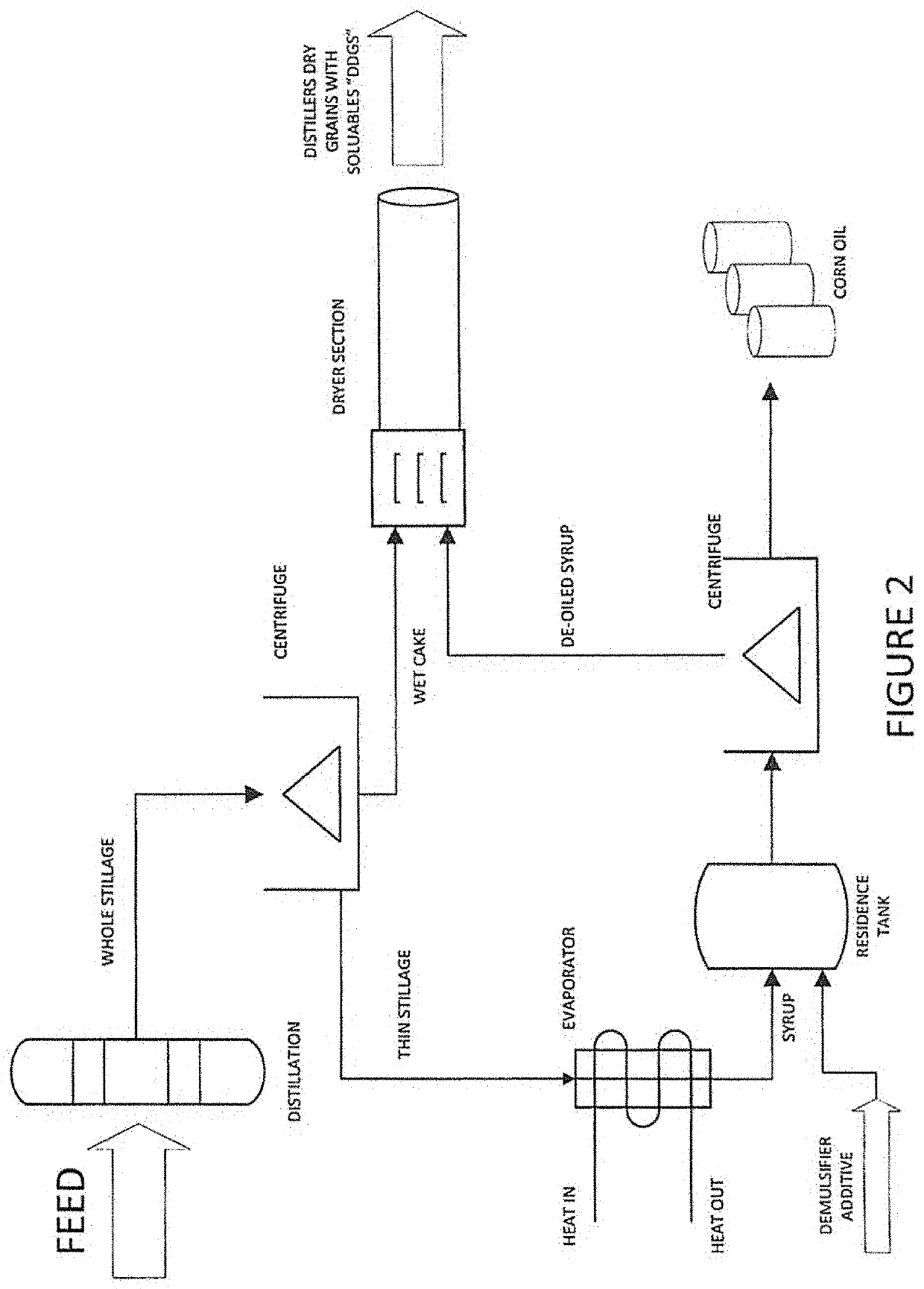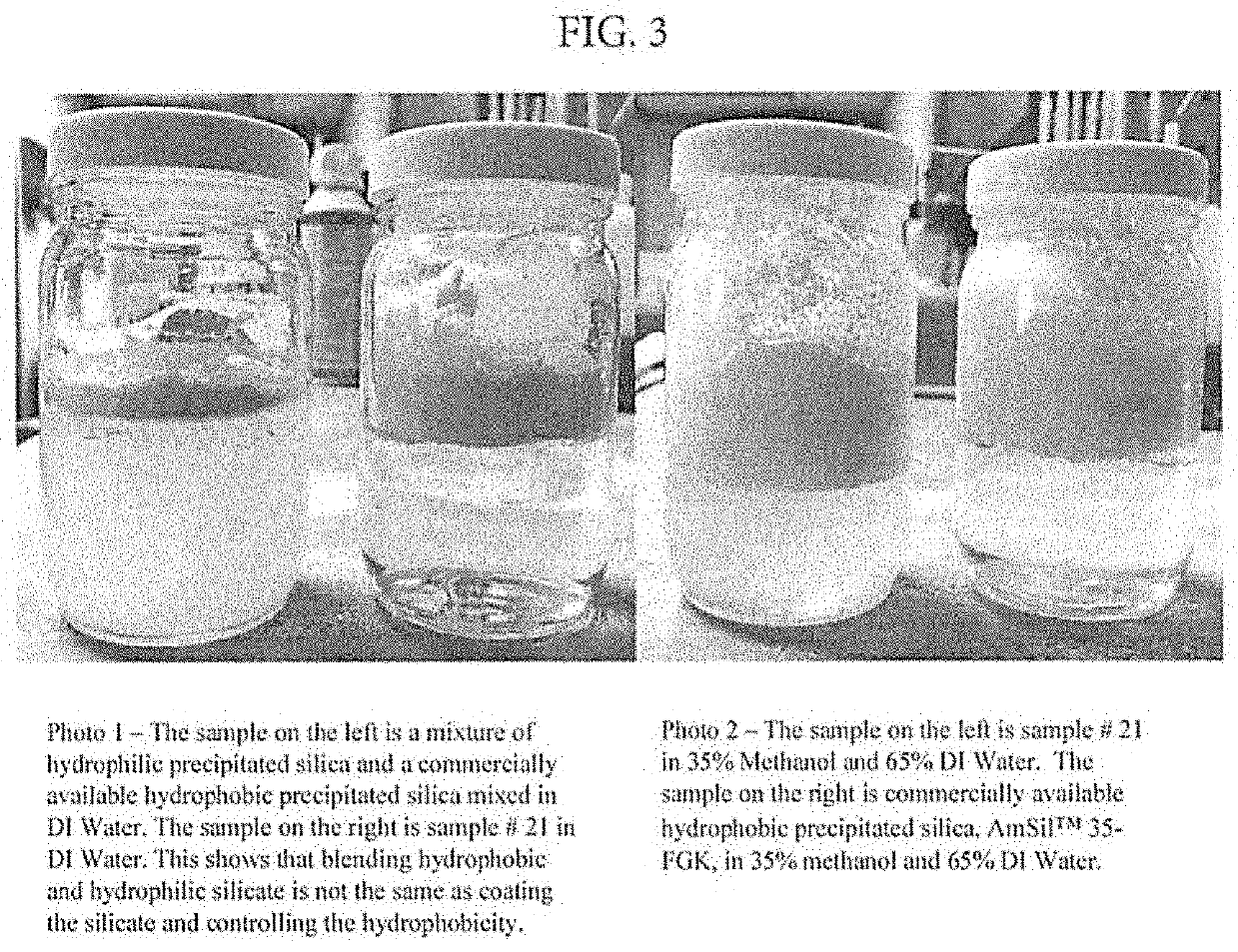Demulsification compound and method for oil separation from waste streams
a technology of oil separation and demulsification compound, which is applied in the field of chemical compounds, can solve the problems of inconsistent yield of this material, and achieve the effect of enhancing oil recovery and enhancing the extraction of emulsified oil
- Summary
- Abstract
- Description
- Claims
- Application Information
AI Technical Summary
Benefits of technology
Problems solved by technology
Method used
Image
Examples
Embodiment Construction
[0052]Exemplary additive for reclaiming oil from fluid product stream compositions, methods of making the chemical additive, and applications of such chemical additive will now be described in detail with respect to the detailed description and examples that follow. The preferred embodiments described herein are not intended to be exhaustive or to limit the invention to the precise forms disclosed. The section headings provided herein are for convenience only and are not intended to limit the scope of the invention in any way.
[0053]As noted above, and also in FIGS. 1 and 2, the formulated additive for reclaiming oil from fluid product stream compositions increases the oil separation rate and efficiency when added in specific amounts and under specific conditions.
[0054]It has been known, to those skilled in the art, that surfactants help with the separation of organic oils / materials and dewatering since before the late 1990's. The use of silicates such as precipitated or fumed silico...
PUM
 Login to View More
Login to View More Abstract
Description
Claims
Application Information
 Login to View More
Login to View More - R&D
- Intellectual Property
- Life Sciences
- Materials
- Tech Scout
- Unparalleled Data Quality
- Higher Quality Content
- 60% Fewer Hallucinations
Browse by: Latest US Patents, China's latest patents, Technical Efficacy Thesaurus, Application Domain, Technology Topic, Popular Technical Reports.
© 2025 PatSnap. All rights reserved.Legal|Privacy policy|Modern Slavery Act Transparency Statement|Sitemap|About US| Contact US: help@patsnap.com



